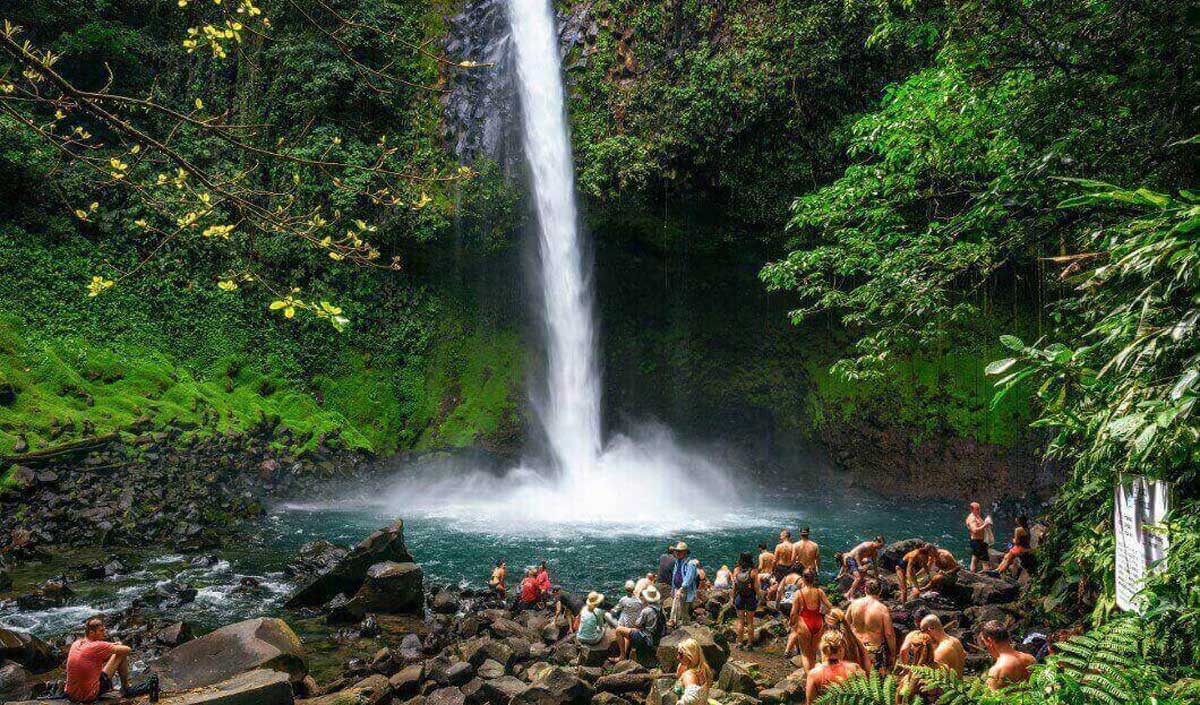Tourism-related activities in Costa Rica showed a significant revival and dynamism before the easing of measures to contain Covid 19. According to the Costa Rican Institute of Tourism, during the first quarter of this year, about 632,000 tourists entered the country by all routes, which amounted to 63 % of international tourist visits compared to the beginning of the pandemic in 2019.
At the national level, there are positive signs indicating the recovery of the tourism sector, recreational and gastronomic activities. This is becoming increasingly visible in the rise in the number of people visiting restaurants, resorts or events such as concerts and football matches. This data is backed up by various local media outlets who have assessed high hotel occupancy rates in both the Pacific region and Costa Rica’s southern Caribbean during the summer.
According to the National Chamber of Tourism, hotel occupancy in sunny and beach hotels during Easter week this year reached 93%, while the Costa Rican Chamber of Hotels reported occupancy up to 98%.
Indirect industries associated with the tourism sector (from air travel, domestic travel, restaurants, hotels, guides, handicraft sales, national park tickets, resort tickets) confirm how important it is for a country to maintain proper conditions for both international and internal visitors. According to the Central Bank of Costa Rica, 245,253 people were employed in tourism in 2018, which is about 10.5% of the economically active population (EAP), so the direct and indirect effects generated by tourism-related activities also affect the recovery employment in Costa Rica.
Several conditions need to be maintained or improved in order to guarantee a quality tourism experience and thus ensure sustainable demand for tourism activities. The most important factor in attracting international tourism to Costa Rica is the biodiversity that the country enjoys as part of the conservation of natural resources. However, other aspects need to be improved, mainly related to security. Crimes against foreign tourists that have occurred in recent years in both the South Caribbean and North Pacific regions of Costa Rica have received international publicity in the European and American press (the country’s main tourist markets). Therefore, the recovery of the tourism sector necessarily requires the improvement of personal security conditions in the tourist regions of Costa Rica. Greater vigilance and efficiency is required on the part of the institutions responsible for providing safe space, as well as more effective attention to the victims and punishment of the perpetrators.
The recovery of some regions is slower, or tourists, especially national ones, have lost interest in visiting certain areas of the country. An alarming case is the central canton of Puntarenas; this region with high levels of inequality and poverty has traditionally been an important destination for domestic tourists. Tourism authorities are gradually encouraging the development of large-scale artistic events such as concerts and international sports events within the canton so that these events can attract national and international tourists to stimulate trade in the region. However, this requires interagency coordination to ensure the health and safety of participants.
Another aspect that could be improved in the future, counting on a gradual weakening of the entry of tourists into the country, is the increase in the number of visits by digital nomads. Since August 11, 2021, Costa Rica has the appropriate legal framework in place to attract remote workers and international service providers. Law No. 22,215 creates favorable conditions and appropriate regulations for the country to compete internationally in attracting this type of visitor, which may increase in the future and generate significant demand for services such as accommodation and related services (food, internet, among others).

